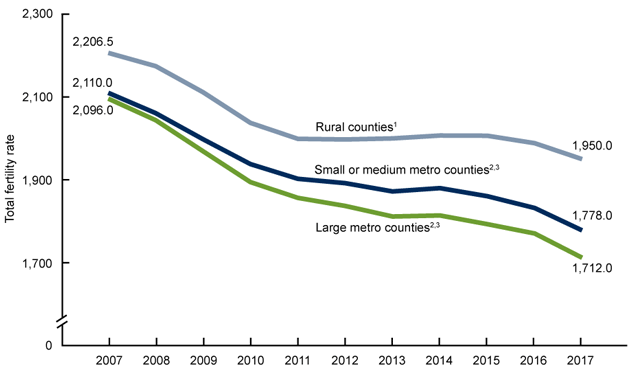The Middle-Class Majority, Failing Fertility Rates, and the Biological Convergence
Patrick Cox
In the 1990s, the concept of the “technological convergence” entered the public consciousness.
Though it seemed implausible to many at that time, phones, TVs, and computers would merge into a world of connected devices.
The impact of the electronic revolution on our lives has been unparalleled—but it was only a precursor to a far more profound biological convergence.
Three interconnected forces are driving this transformation: the end of human poverty, falling fertility rates, and much longer healthspans.
In my last several columns, I predicted the publication of peer-reviewed evidence that aging can be prevented and reversed within the next few years. Shortly after, several readers sent me stories about scientists in Singapore who nearly doubled the lifespans of the C. elegans roundworms.

Source: commons.wikimedia.org
The study, published in Developmental Cell, describes how a cocktail of drugs, including rapamycin and metformin, nearly doubled C. elegans’ lifespans. Obviously, roundworms are not people, but they share many of the pathways associated with human aging. Moreover, preliminary results indicate that the drug cocktail yields similar benefits in another well-studied species, the fruit fly Drosophila melanogaster.
This study was not the evidence I was predicting. Nevertheless, it proves that concepts considered controversial just a few years ago are now mainstream.
Science Alert quotes the principal investigator of the study, biochemist Jan Gruber from Yale-NUS College, who says, “If we can find a way to extend healthy lifespan and delay ageing in people, we can counteract the detrimental effects of an ageing population."
We’ll see far more persuasive evidence soon, but today I want to remind you of a seemingly obvious relationship…
Wealth, Longer Lives, and Falling Birthrates Go Together
Already, fertility in the developed world is well below replacement rates. There are still some areas with growing populations, mostly in undeveloped regions of Africa, but that’s changing rapidly as standards of living rise.
How fast? According to two researchers associated with the Brookings Institute, last month marked the tipping point where 50% of the world’s population achieved enough discretionary income to attain “middle-class” status. Most of this change has taken place in the last few decades.
For the first time in history, most humans live above the poverty line. In this Brookings article, the authors say, “Barring some unfortunate global economic setback, this marks the start of a new era of a middle-class majority.”
Even in sub-Saharan Africa where many population groups still endure poverty, lifespans are increasing. Average caloric intake is about what the US Department of Agriculture recommends for moderately active adults.
Almost nobody forecast such rapid global economic progress, which has come about due to more political and economic freedom. Most people, including journalists, are still unaware that it has even happened.
Because the developing world is adapting technologies from the developed world, improvements in health and wealth appear to be accelerating. However, that means past forecasts of slowing population growth have underestimated how fast birthrates will fall.
We don’t really understand this link between longer lives and lower birthrates, despite what some people claim. Some of the reduction in birthrates is due to choice, but there is also a biological component.
Some scientists blame unhealthy modern diets and lifestyles, or environmental toxins. Others think the culprit may be a deeper genetic mechanism that would prevent overpopulation in a world with much longer lifespans... though few will go on the record with that controversial position.
Regardless, male fertility appears to be dropping dramatically. Researchers at Hebrew University and the Icahn School of Medicine at Mount Sinai in New York examined 250 studies on male sperm counts in the developed world and found an annual 1.4% decrease since 1973.
That’s a total decline of about 60% in 40 years.
I don’t believe this will continue in a linear fashion, but if it did, it would mean that natural human reproduction would end in about a generation.
Lower male fertility probably contributed to later births even among women seeking pregnancy. Since 2007, the age of first-time mothers has risen by about two years in the US.
A few weeks ago, the CDC announced significant drops in US birthrates among all race and ethnic groups over the last decade. One interesting result: the drop is significantly faster in metropolitan than rural counties.
We don’t know if this difference is a matter of choice or environment—but it’s interesting that rural and urban populations also tend to have different political alignments. If this rural/urban fertility disparity continues, it will have a major impact on the electoral scene.

Source: www.cdc.gov
Compared to Europe and Asia, the US birthrate is still relatively high, at about 1.8 children per woman. At least 2.1 births are required for population replacement, and Europe and China are at about 1.6 births per woman. Within a generation, most of the world will be below replacement fertility rate.
While some consider depopulation a good thing, economists like me worry that it endangers the economic growth needed to pull the rest of the world out of poverty. Of particular concern is that a shrinking younger population would be economically unable to care for a growing older population.
Another thought: wealthy societies also have better ecological records. Depopulation could actually increase harm to the environment.
I find it remarkable that depopulation and all its problems are looming just as scientists are proving the efficacy of anti-aging therapies. The cocktail approach that I mentioned earlier is only the tip of the iceberg.
I’ve written before about induced tissue regeneration (iTR), the reactivation of the gene pathways that grow perfect embryos. At least a half a dozen important research groups are now working on biotechnologies that could reverse aging and significantly increase healthspans, probably into hundreds of healthy years.
I’m convinced the end of poverty and plummeting fertility rates require such a medical breakthrough to maintain healthy population levels and functional economies. I believe the fact that they’re all converging at once is more than a coincidence, but I don’t pretend to understand the mechanism.
0 comments:
Publicar un comentario